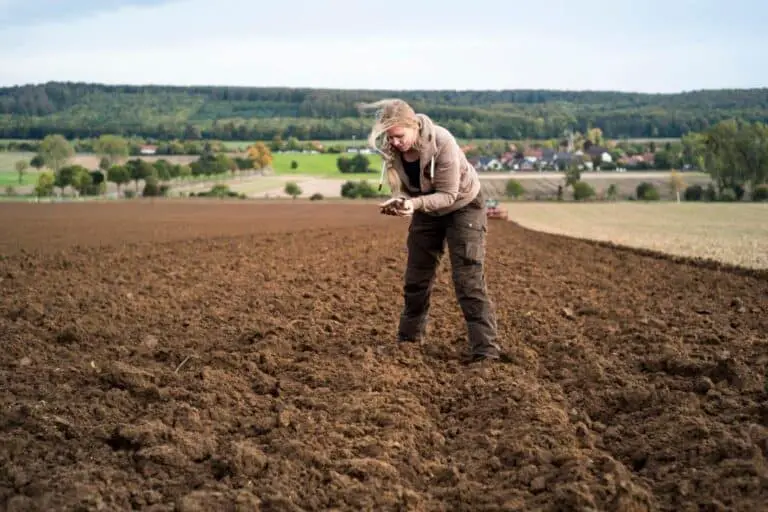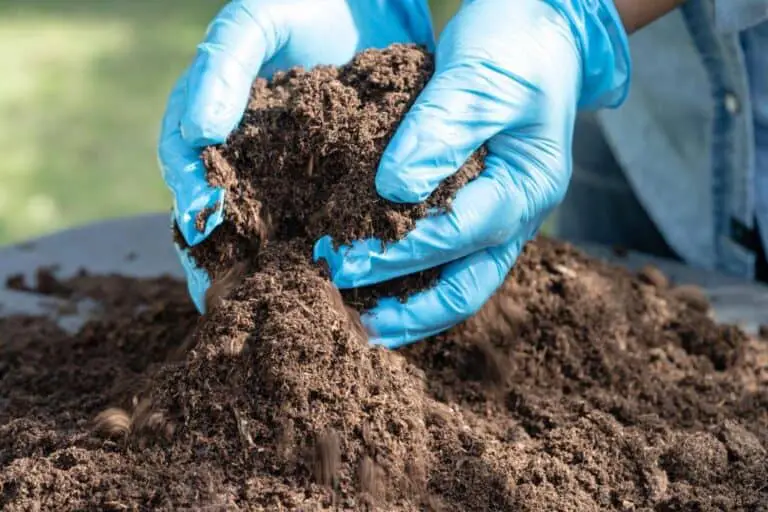Top 10 Plants That Need High Nitrogen: Every Gardener Should Know

Welcome to a world where plants reign supreme and nitrogen is the secret ingredient for their success! If you’ve ever marveled at the lush greenery and bountiful harvests in thriving gardens, chances are nitrogen played a crucial role.
In this article, we will unveil the top 10 plants that have an insatiable appetite for high nitrogen levels. These nitrogen-loving wonders range from the iconic corn stalks that tower over fields to the juicy, sun-ripened tomatoes that grace our plates.
We’ll explore leafy greens like lettuce and spinach that thrive on nitrogen’s nurturing touch, and legumes like beans and peas that not only fix nitrogen but also relish in its abundance. From the cruciferous beauty of cabbage to the nutrient-dense bounty of blueberries, we’ll journey through the vibrant world of plants that thrive on nitrogen’s power.
So buckle up and get ready to discover the fascinating plants that dance in the limelight of high nitrogen environments!
Understanding Nitrogen in Plants
Nitrogen is an essential element for plant growth and development. It plays a crucial role in various physiological processes and is a key component of proteins, enzymes, and chlorophyll.
Nitrogen is a primary macronutrient that plants obtain from the soil or other sources. It is involved in critical functions like photosynthesis, energy transfer, and the formation of DNA and RNA.
Without sufficient nitrogen, plants exhibit stunted growth, yellowing leaves, and reduced productivity. Conversely, excessive nitrogen can lead to imbalances, affecting plant health and the environment. It’s important to strike the right balance for optimal growth.
Identifying Plants That Require High Nitrogen
Certain plants have a higher nitrogen requirement compared to others. They exhibit specific characteristics that indicate their affinity for nitrogen-rich environments. These plants typically have a rapid growth rate, lush foliage, and a high demand for chlorophyll production. Examples of crops and garden plants that fall into this category include corn, tomatoes, lettuce, spinach, cabbage, and peppers.
By understanding these characteristics, gardeners and farmers can identify which plants need extra nitrogen to thrive.
Top 10 Plants That Need High Nitrogen
Some plants have a greater appetite for nitrogen than others, and in this article, we will explore the top 10 plants that thrive in environments with high nitrogen levels.
1. Corn (Zea mays)
Corn, also known as maize, is a staple crop that has been cultivated for thousands of years. It is a high-demand nitrogen plant that requires abundant nitrogen for optimal growth. With its tall stalks and vibrant green leaves, corn is a visually stunning addition to any garden. Apart from being a valuable food source, corn also has numerous industrial applications.
2. Tomatoes (Solanum lycopersicum)
Tomatoes are a popular choice among home gardeners and commercial growers alike. These juicy, red fruits not only taste delicious but also require a nitrogen-rich environment to thrive. Tomato plants with sufficient nitrogen produce healthy foliage and abundant fruit. With their versatility and wide range of culinary uses, tomatoes are a must-have in any garden.
3. Lettuce (Lactuca sativa)
Lettuce is a leafy green vegetable that is often consumed in salads and sandwiches. It is a fast-growing plant that benefits greatly from high nitrogen levels. Adequate nitrogen promotes rapid leaf development and ensures tender, flavorful leaves. Lettuce is an easy-to-grow crop, making it an ideal choice for beginner gardeners.
4. Spinach (Spinacia oleracea)
Spinach is a nutrient-dense leafy green that is packed with vitamins and minerals. It is known for its rapid growth and high nitrogen requirements. Spinach plants with access to ample nitrogen produce larger, more vibrant leaves. This versatile vegetable can be used in salads, soups, and a variety of other dishes.
5. Beans (Phaseolus vulgaris)
Beans are a diverse group of plants that encompass a range of species, including green beans, kidney beans, and pinto beans. They are nitrogen-fixing legumes, which means they have the unique ability to convert atmospheric nitrogen into a usable form through a symbiotic relationship with nitrogen-fixing bacteria. However, even nitrogen-fixing plants benefit from additional nitrogen in the soil.
6. Cabbage (Brassica oleracea)
Cabbage is a cruciferous vegetable that belongs to the Brassica family. It is a cool-season crop that flourishes in environments with high nitrogen levels. Cabbage plants that receive adequate nitrogen produce larger heads and have a more vibrant green color. Cabbage is commonly used in salads, coleslaws, and a variety of cooked dishes.
7. Peas (Pisum sativum)
Peas are another nitrogen-fixing legume that benefits from supplemental nitrogen in the soil. These sweet, green pods are a favorite among gardeners and are relatively easy to cultivate. Pea plants with access to sufficient nitrogen develop strong vines and produce an abundance of flavorful peas. Peas can be eaten fresh, cooked, or even used in soups and stews.
8. Broccoli (Brassica oleracea)
Broccoli is a nutritious vegetable that is rich in vitamins, minerals, and fiber. It is a close relative of cabbage and shares its affinity for nitrogen-rich environments. Adequate nitrogen levels promote vigorous growth and ensure the development of dense, dark green florets. Broccoli is a versatile vegetable that can be steamed, stir-fried, roasted, or used in various other culinary preparations. It is a valuable addition to any garden, both for its nutritional benefits and its ornamental value.
9. Sunflowers (Helianthus annuus)
Sunflowers are known for their stunning and vibrant blooms, which follow the movement of the sun throughout the day. These cheerful flowers not only beautify gardens but also have a high nitrogen requirement. Adequate nitrogen levels contribute to the healthy growth of sunflower plants, ensuring robust stems, lush foliage, and large, vibrant flowers. Sunflowers are also beneficial for attracting pollinators to your garden.
10. Blueberries (Vaccinium spp.)
Blueberries are delicious, nutritious, and highly sought-after fruits that grow on shrubs belonging to the Vaccinium genus. These perennial plants thrive in acidic soils rich in organic matter and high in nitrogen. Nitrogen promotes healthy growth, abundant foliage, and ultimately, a bountiful harvest of plump, flavorful blueberries. Blueberries are not only a tasty treat but also packed with antioxidants and other beneficial compounds.
Sources of Nitrogen for Plants
To meet the high nitrogen needs of specific plants, it’s essential to provide them with appropriate nitrogen sources. There are natural and synthetic options available for nitrogen supplementation.
Natural sources of nitrogen in the soil include organic matter, such as decomposed plants and animal waste, which releases nitrogen over time. Synthetic fertilizers, on the other hand, offer readily available nitrogen in concentrated form.
Additionally, organic alternatives like compost, manure, and green manure provide slow-release nitrogen and improve soil health.
Soil Preparation for Nitrogen-Hungry Plants
Creating a nitrogen-rich environment starts with proper soil preparation. Conducting a soil test helps determine the existing nitrogen levels and assists in identifying any deficiencies or excesses. Techniques like soil amendment and fertilization can enhance nitrogen availability.
Adding organic matter, such as compost or well-rotted manure, enriches the soil with nitrogen and improves its overall fertility. Choosing suitable fertilizers, either organic or synthetic, is crucial for meeting the nitrogen requirements of high-demand plants.
Nitrogen Management in Gardens and Farms
Efficient nitrogen management is vital to prevent nutrient loss, protect the environment, and ensure optimal plant growth. Understanding nitrogen cycling in agricultural systems is key. Implementing crop rotation, where nitrogen-fixing plants are grown in rotation with high-nitrogen-demanding crops, helps replenish nitrogen levels naturally. This reduces the reliance on synthetic fertilizers and maintains a sustainable nutrient balance.
Proper timing and application methods for nitrogen fertilizers also play a significant role in maximizing plant uptake and minimizing losses.
To further illustrate the nitrogen management practices, refer to the table below:
| Nitrogen Management Techniques | Benefits |
| Crop rotation with nitrogen-fixing plants | Enhances soil nitrogen levels naturally |
| Precision timing of nitrogen application | Maximizes plant uptake and reduces wastage |
| Split applications of nitrogen fertilizer | Avoids excessive nitrogen in the soil |
| Cover crops for nitrogen fixation | Improves soil fertility and nitrogen availability |
| Efficient irrigation practices | Minimizes leaching of nitrogen |
Implementing these best practices ensures that plants receive adequate nitrogen while minimizing environmental impacts.
Common Problems with High-Nitrogen Plants
While nitrogen is essential for plant growth, excessive levels can lead to various problems. Some potential issues associated with high nitrogen levels include:
- Nitrogen Toxicity: When plants receive more nitrogen than they need, it can lead to nitrogen toxicity. This condition manifests through symptoms such as dark green foliage, weak stems, and reduced fruiting or flowering.
To prevent and address nitrogen-related problems, consider the following strategies:
- Proper Fertilizer Application: Use fertilizers with the appropriate nitrogen content and follow recommended application rates. Avoid over-fertilization, which can contribute to excessive nitrogen levels.
- Soil Testing: Regularly test your soil to determine its nutrient levels, including nitrogen. This will help you make informed decisions about fertilizer application and ensure that you provide adequate but not excessive nitrogen to your plants.
Companion Planting for Nitrogen Fixation
Companion planting involves growing certain plants together to create a mutually beneficial environment. Nitrogen-fixing plants play a vital role in replenishing nitrogen levels in the soil. Here’s how you can utilize companion planting for nitrogen fixation:
- Nitrogen-Fixing Plants: Certain plants, such as legumes (e.g., peas and beans) and clover, have a unique ability to convert atmospheric nitrogen into a usable form for plants. These plants host nitrogen-fixing bacteria in their root nodules, enriching the soil with nitrogen.
- Pairing Nitrogen-Fixing Plants: Pair nitrogen-fixing plants with high-nitrogen-demanding crops. The nitrogen-fixing plants will supply the nitrogen requirements of neighboring plants, reducing the need for additional nitrogen fertilizers.
Here are some successful companion planting combinations:
- Planting beans or peas alongside corn or tomatoes
- Interplanting clover with brassicas like cabbage or broccoli
Managing Nitrogen in Container Gardening
Container gardening poses unique challenges when it comes to managing nitrogen levels. Consider the following strategies for successful nitrogen management in container gardens:
- Challenges and Considerations: Container-grown plants have limited access to nutrients and rely heavily on the potting mix. High-nitrogen plants in containers may deplete nitrogen more rapidly, requiring careful attention to nutrient management.
- Suitable Potting Mixes and Fertilizers: Choose a potting mix that contains organic matter and slow-release nitrogen sources. Additionally, select fertilizers specifically formulated for container gardens, as they provide a balanced nutrient profile.
- Watering and Nutrient Management: Proper watering and nutrient management are crucial for nitrogen-hungry plants in containers. Consider the following strategies:
- Watering: Provide consistent moisture to container plants, as they can dry out more quickly than plants in the ground. Proper watering ensures that plants can take up nitrogen efficiently and prevents nutrient imbalances.
- Fertilizer Application: Apply fertilizers according to the specific needs of the plants and the instructions on the product labels. Avoid over-fertilization, as it can lead to nutrient imbalances and potential damage to the plants.
Conclusion
Understanding the nitrogen requirements of plants is crucial for successful gardening and farming. By identifying plants that need high nitrogen, addressing common problems associated with excessive nitrogen, and implementing strategies like companion planting and proper pruning, you can ensure optimal growth and productivity.
Additionally, managing nitrogen in container gardening and adopting sustainable approaches to nitrogen management contribute to environmentally friendly practices. With the right knowledge and techniques, you can create a nitrogen-rich environment for your plants while minimizing their environmental impact.






